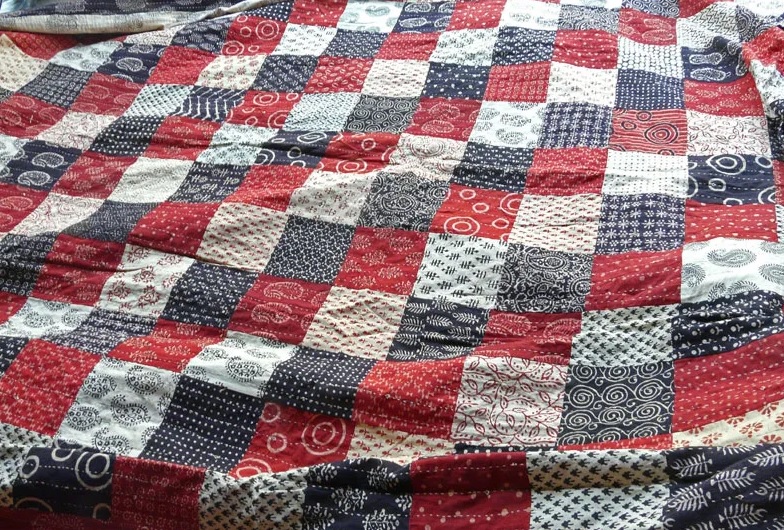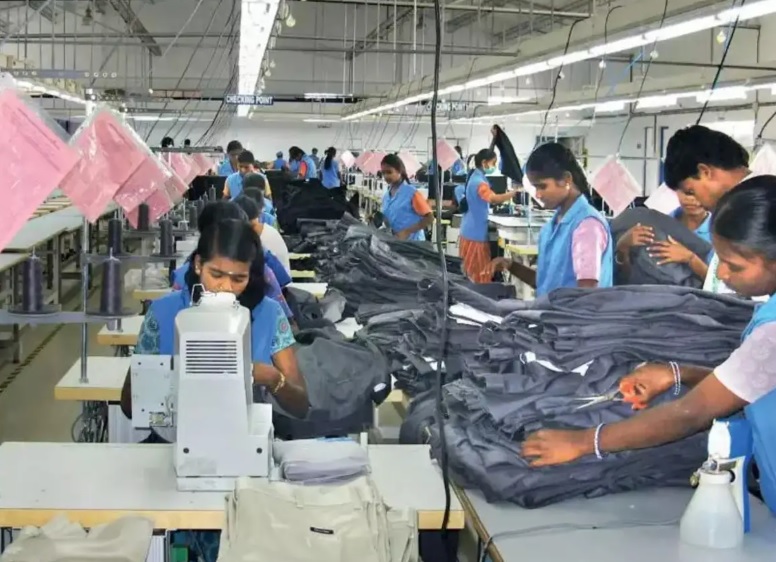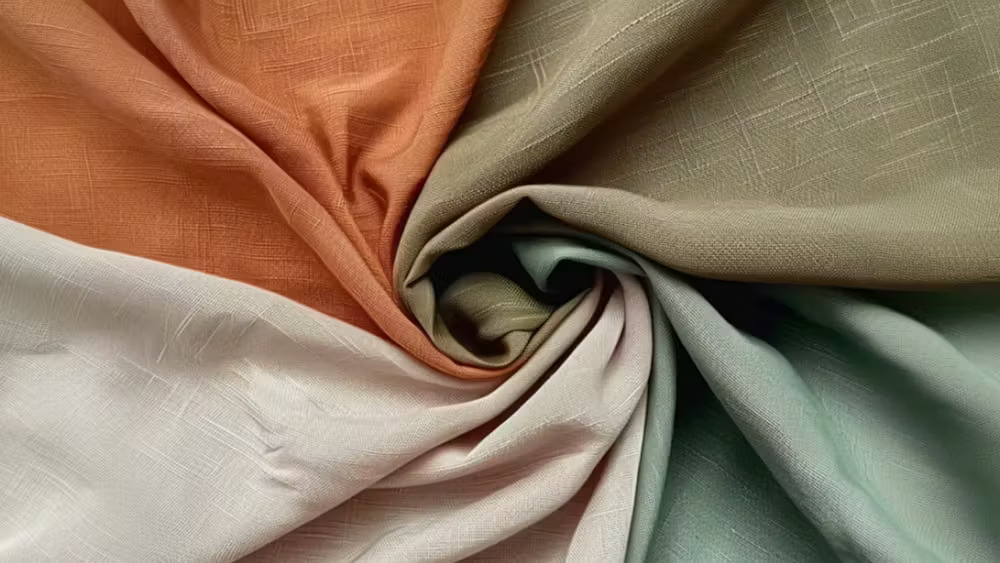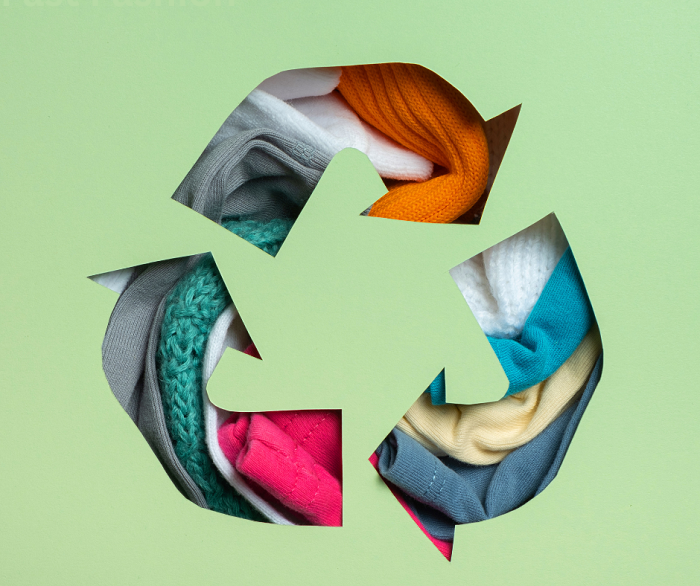FW
A Guwahati-based MSME unit, Pragjyotika Enterprises was honored with a Certificate of Excellence for its innovative contributions as a leading machine manufacturer in the Vanya Silk Post Cocoon sector. The award was presented during the Central Muga Eri Research & Training Institute’s silver jubilee celebrations by Pabitra Margherita, Minister of State for Textiles and Foreign Affairs.
Operational since the last 30 years, Pragjyotika Enterprises is the leading provider of textile machinery across Northeast India. Dedicated to the region’s development, the company has so far distributed10,000 to 15,000 machines, creating significant employment opportunities and supporting local economies across rural areas.
Manish Jain, CEO, Managing Director and Proprietor, M/s Pragjyotika Enterprises, says, the backbone of livelihoods in Northeast India, textile sector helps generate employment besides fuelling economic growth across the region. His remarks highlight the essential role of small and medium enterprises in fostering economic resilience and job creation in regions with limited large-scale industrialisation.
Besides fostering industrialisation and generating millions of jobs across the region, China's advanced technology and the Belt and Road Initiative would also help Africa realise the full potential of its textile and apparel sector, opined experts at the 2024 Sino-Africa International Symposium on Textile and Apparel in Casablanca, Morrocco.
Highlighting Africa’s abundant natural and human resources, Aouraghe Mohamed Amine, Associate Professor, Quanzhou Normal University in Fujian, China emphasised, China’s global leadership in high-end textile technology can support Morocco, especially through its wide-ranging applications in fields such as medicine, aerospace, automotive, apparel, and geotextiles.
Yan Jinjiang, Industrial Development Officer, United Nations Industrial Development Organisation, noted, Africa has the required potential to become a global leader in sustainable textiles. Key growth areas such as recycled materials, the creation of industrial parks, and technology-sharing from other nations, could fuel Africa's growth in the sector, he added.
Sun Ruizhe, President, China National Textile and Apparel Council, explained, since its reform era, China has built a comprehensive and competitive textile sector and actively shared its manufacturing innovations and capabilities with global markets.
Liu Chenggong, Party Secretary, Donghua University in Shanghai, emphasised, a thriving textile industry is essential for a nation’s industrialisation and its modernisation. Echoing President Xi Jinping’s call for stronger China-Africa collaboration during the recent Forum on China-Africa Cooperation Summit, Liu highlighted, combined with a 2.8 billion population, this could help drive modernisation forward.
Morocco’s proactive industrial policies have optimised its business climate and expanded international trade, enabling substantial growth in manufacturing, including textiles, Liu affirmed. This forum could prove as a valuable opportunity to strengthen ties with the Moroccan Textile and Apparel Industry Association and the School of Textile and Clothing Industries, he added.
Global Fashion Summit’s Shanghai Gala, presented by Global Fashion Agenda (GFA) and China mind Next on 7 November, brought together local and international fashion leaders during the China International Import Expo. Hosted at The St. Regis Shanghai Jingan, the event focused on the theme, ‘Unlocking the Next Level,’ building on insights from the Copenhagen edition held in May. By staging this summit in Shanghai, a city known for blending tradition with cutting-edge trends, GFA aimed to foster cross-border collaboration and inspire sustainable practices worldwide.
The evening included keynote speeches from representatives of brands such as Coach, H&M Group, Piaget China, Decor Global, and Target. Topics like ‘Circularity at Scale,’‘Shaping Sustainable Retail,’ and ‘Ambition to Action’ highlighted the industry’s efforts to adopt eco-friendly initiatives across the fashion value chain.
A major announcement of the event was the release of The GFA Monitor 2024, an essential guide for industry leaders on advancing sustainability and achieving net positive impact. This report, launched ahead of COP29, offers a streamlined update on the industry's achievements and persisting challenges.
Federica Marchionni, CEO of GFA, emphasized the importance of converting sustainability goals into tangible actions. Lynn Fu, CEO of China mind Next, noted China’s role as a leading apparel consumer, adding that collaboration between Chinese and international brands is pivotal for industry-wide sustainable transformation.
Additionally, GFA announced ticket sales for the upcoming Global Fashion Summit: Copenhagen Edition 2025, themed ‘Barriers and Bridges,’ scheduled for 3-5 June, which will continue the conversation on overcoming obstacles to sustainability.

The Union government has just unveiled its ambitious Textile Policy for 2024, aiming to revitalize the nation's textile industry and propel it to new heights. The policy, with its focus on technology, sustainability, and labor-intensive growth, has been met with a mix of optimism and cautious scrutiny by industry players and trade bodies.
Policy highlights
The policy's core objective is to transform India into a global textile powerhouse by increasing textile production to $350 billion by 2030; achieving $100 billion in textile exports by 2030; creating 10 million new jobs in the textile sector by 2025.
Table: Textile industry performance
|
Year |
Production ($ bn) |
Exports ($ bn) |
Employment (mn) |
|
2023 |
$150 |
$40 |
45 |
|
2030 (Target) |
$350 |
$100 |
55 |
To achieve these targets several initiatives have been introduced viz:
Financial incentives: Capital subsidies ranging from 10 per cent to 35 per cent for investments in manufacturing with the maximum amount capped at Rs 100 crores. Credit-linked interest subsidies are available for labour-intensive units at 7 to 8 per cent for up to eight years, with an annual cap of 3 per cent.
Technical textiles in the forefront: Promotion of technical textiles, including clothing and apparel, through research and development grants and infrastructure support. Focus on traditional manufacturing processes which includes various stages of textile production, such as spinning, weaving, dyeing, and finishing.
Focus on labour-intensive units: The policy prioritizes labour-intensive units, defined as new industrial units employing at least 4,000 registered individuals under the Employee Provident Fund (EPF) scheme, including a minimum of 1,000 women. These units can receive capital subsidies of 25 to 35 per cent, capped at Rs 150 crores, and are eligible for credit-linked interest subsidies of 7 per cent to 8 per cent for up to 8 years.
Sustainability: Emphasis on reducing the industry's environmental footprint through incentives for water and energy conservation and adoption of green technologies.
Skill development: Upskilling the workforce through training programs and educational initiatives to meet the demands of a modern textile industry. Infrastructure development: Creation of textile parks and mega clusters to provide state-of-the-art facilities and attract investments.
Table: Capital subsidy structure
|
Year |
Production ($ bn) |
Exports ($ bn) |
Employment (mn) |
|
2023 |
$150 |
$40 |
45 |
|
2030 (Target) |
$350 |
$100 |
55 |
Industry welcomes new policy
The textile industry has largely welcomed the new policy, as they believe it is a positive step towards strengthening the sector. Confederation of Indian Textile Industry (CITI) chairman, T Rajkumar says, "The new textile policy is a comprehensive document that addresses the key challenges faced by the industry. The focus on technology upgradation, skill development, and sustainability is commendable.” On similar lines, Rahul Mehta, Chief Mentor, Clothing Manufacturers Association of India (CMAI) points out “The incentives for labour-intensive units will encourage employment generation and boost domestic manufacturing."
However, some experts look at it objectively and as they say there is lack of clarity on implementation. They are concerned about the lack of specific details on how the policy will be implemented, particularly regarding the disbursement of subsidies and the timeline for various initiatives. Moreover, the policy's success hinges on the availability of adequate infrastructure, including reliable power supply, efficient transportation networks, and skilled labor and these segments need government’s focus at the moment. India also faces stiff competition from countries like Bangladesh and Vietnam, which offer lower labor costs and preferential trade agreements hence there is a need to put in place FTAs and trade agreements.
India’s textile policy 2024 has the potential to transform the sector and contribute significantly to the country's economic growth. However, its success will depend on the government's ability to implement it despite challenges and ensure the benefits reach all segments of the industry. By fostering innovation, promoting sustainability, and enhancing the skills, India can solidify its position as a global textile powerhouse.
At a meeting to discuss the impact of the current policy framework on Surat’s textile sector, Southern Gujarat Chamber of Commerce and Industry (SGCCI) urged the state government to extend incentives in the new textile policy to units within municipal corporation limits.
The recently announced policy restricts subsides for new or expanding units within municipal boundaries. However, these units can be expanded further within the city, argue industry representatives.As the issue has a direct impact on the textile industry in the city, SGCCI plans to discuss it with the government, states Vijay Mevawala, President.
Pramod Chaudhary, Managing Director, Pratibha Group, emphasises, Surat's infrastructure, including Common Effluent Treatment Plants (CETPs) within municipal limits, can support new processing units. The CETPs in Pandesara and Sachin are fully equipped to serve additional units, making expansion within city limits viable,he adds.
Ashish Gujarati, President, Pandesara Weavers Co-operative Society, points out, while developing the new textile policy, the government state failed to consider Surat’s unique industrial environment within Gujarat. It needs to introduce an inclusive policy encouraging existing textile businesses to continue operating in Surat and attract new investments, opine industry leaders.
Improved subsidy conditions and timelines will help boost the city’s textile sector, preventing the shift of industries to other states, they add.
Voicing strong concerns over the government’s decision to halt gas supply to the ‘highly efficient’ captive power plants (CPPs) from Jan 01, 2025, Sohail Pasha, Chairman and Khhurram Mukhtar, Patron-in-Chief, The Pakistan Textile Exporters Association (PTEA), warned, the decision could lead to frequent power outages and voltage instabilities from the power distribution companies, severely impacting the textile sector.
Currently 480 captive power plants across Pakistan operate on the SNGPL network and another 800 on the SSGC network. All of these rely on gas-powered combined heat and power (CHP) systems for not only providing a consistent power source but also avoiding voltage fluctuations andprotecting the automated machinery used throughout the textile industry.
The textile sector has made heavy investments in these gas-based power plants, specifically to ensure a stable and uninterrupted energy supply for operations, Pasha and Mukhtar said. CHP systems being the second-largest consumers of RLNG after the power sector, discontinuing gas supplies could undermine the $19 billion textile export industry and putting millions of jobs at risk, they added.
The government’s decision could also hinder the industry’s ability to meet international commitments and fulfill orders for value-added products, the PTEA leaders noted. Given the existing RLNG supply contracts, halting gas supplies could create an RLNG surplus, adding financial strain to a sector already grappling with economic challenges, they opined.
Further, the PTEA leaders argued, in-house power generation from CPPs is more efficient and cost-effective than relying on the government grid, which incurs transmission and distribution (T&D) losses. Without immediate energy alternatives, the sector could face large-scale closures, posing a serious threat to Pakistan’s textile industry and export economy, they emphasised.
Outshining its rivals, French luxury company Hermes’ revenues increased by 11.3 per cent to €3.7 billion ($3.99 billion) in Q3, FY24, as per an estimate by analyst Jefferies.
Despite a sector-wide slowdown affecting labels across the high-end spectrum, Hermès's famously classic designs and tight management of production and stock have helped reinforce the label's aura of exclusivity and made the company one of the most consistent performers in the industry.
The slowest sales growth the brand witnessed was in the Asia Pacific region though sales in Japan rose by 1 per cent, notes Eric Du Halgouet, Executive Vice President.
The brand continues to face low sales in China. However, it hasn’t faced an additional decline in the market, adds du Halgouet. The brand is compensates for the low sales with higher average baskets, selling jewelry products, leather goods and ready-to-wear for men and women. It plans to continue investing in China and open a new flagship in Beijing next year, affirms Du Halgouet.
In its first comprehensive climate transition plan that outlines the company’s key strategies to cut greenhouse gas (GHG) emission, Levi Strauss & Co (LS& Co) has committed to achieving net-zero emissions by 2050. The San Francisco-based denim giant’s immediate target is to reduce emissions by 2030 and achieve carbon neutrality by 2050.
For this, LS & Co will focus on enhancing its own operations, partnering with suppliers to tackle Scope 3 emissions, and employing responsible governance throughout its business, says Jeffrey Hogue, Chief Sustainability Officer.
In its own facilities, LS&Co plans to invest in energy-efficient and renewable technologies, seek certifications under the US Green Building Council’s LEED program, and work with utility providers and landlords on decarbonisation efforts. A global energy management system already covers over 1,300 company-operated locations, providing valuable data on energy usage. Additionally, LS& Co has collaborated with Walmart and others on the Gigaton Power Purchasing Agreement, a virtual power purchasing agreement in the U.S.
The company will integrate climate-specific KPIs into supplier partnerships and procurement processes, with an aim to set science-based targets for key suppliers. To support their progress, LS & Co will facilitate financing and offer resources for energy and emissions reductions.
Investing in more sustainable, certified materials, and promoting circularity is another priority for LS&Co. As a commitment to sustainable innovation, the brand has launched initiatives such as Levi’s Circular 501 and Plant-based 501 jeans. To further embed sustainability, it plans to incorporate climate risks and opportunities into its annual strategy, seek third-party expert feedback, and leverage partnerships to advocate for climate-supportive policies. Executive compensation will also be linked to climate-related goals relevant to specific job functions.
In the near term, LS& Co aims to achieve a 90 percent reduction in Scope 1 and 2 GHG emissions by 2025, a 42 percent reduction in Scope 3 emissions from purchased goods and services for apparel production by 2030, and a shift to 100 percent renewable electricity in company-operated facilities by 2025. LS & Co also targets a 50 percent reduction in freshwater use in high-stress areas by 2025.
Marking a significant commitment to environmental, social and governance (ESG) responsibility, Italian luxury brand Canali has released its inaugural Sustainability Report.Created according to the Global Reporting Initiative (GRI) Sustainability Reporting Standards, the report highlights Canali’s dedication to integrating sustainable practices into its renowned craftsmanship.
With this report, Canali aims to balance its storied heritage with responsible innovation, reducing its environmental footprint and promoting long-term sustainable growth. Central to these efforts is the CAre project, launched in 2023, which brings all of Canali’s sustainability initiatives under one umbrella. Led by a dedicated Sustainability Committee, CAre reflects the brand’s commitment to continually enhancing its environmental and social practices, while ensuring strong governance.
Since 2021, Canali has embraced the Organisation Environmental Footprint (OEF) and Product Environmental Footprint (PEF) methodologies, tools recommended by the European Union to precisely measure environmental impact. These methodologies guide Canali in identifying areas for improvement and enacting meaningful changes across its operations. Producing exclusively in Italy, the brand not only minimises its carbon footprint but also honors Italian artisanal excellence.
Stefano Canali, President and CEO, Canali Group, remarks, this first Sustainability Report is a testament to the brand’s dedication to continuous improvement. The group is committed to elevating its environmental and social responsibility standards in alignment with the highest international guidelines to drive meaningful progress.
Kamran Arshad, Chairman, All Pakistan Textile Mills Association (APTMA), has urged Pakistan’s Monetary Policy Committee to reduce interest rates by 400 basis points to support the textile sector and boost exports.
Currently at an effective rate of 10.6 per cent, high borrowing costs are hampering the industry’s growth Arshad highlights. Emphasising on the need for immediate action, he notes, while inflation has eased to 6.9 per cent, the interest rate remains high at 17.5 per cent, creating significant challenges for the sector.
Lower interest rates are essential for economic recovery and job creation as the current rates continue to threaten the textile industry’s stability, Arshad argues. Reducing interest rates is crucial for economic revival and expanding employment opportunities,adds.
Earlier this week, Finance Minister Muhammad Aurangzeb indicated that the State Bank of Pakistan (SBP) might consider further interest rate cuts during the upcoming Monetary Policy meeting on November 4. The SBP has already reduced its benchmark rate by 450 basis points across three consecutive meetings, bringing it down from a peak of 22 per cent to 17.5 per cent.
Meanwhile, the government is pursuing a broader economic strategy aimed at increasing its tax share by up to 135 per cent. APTMA’s call for an interest rate reduction underscores the need for policy adjustments to support Pakistan’s textile industry and strengthen its export competitiveness.












